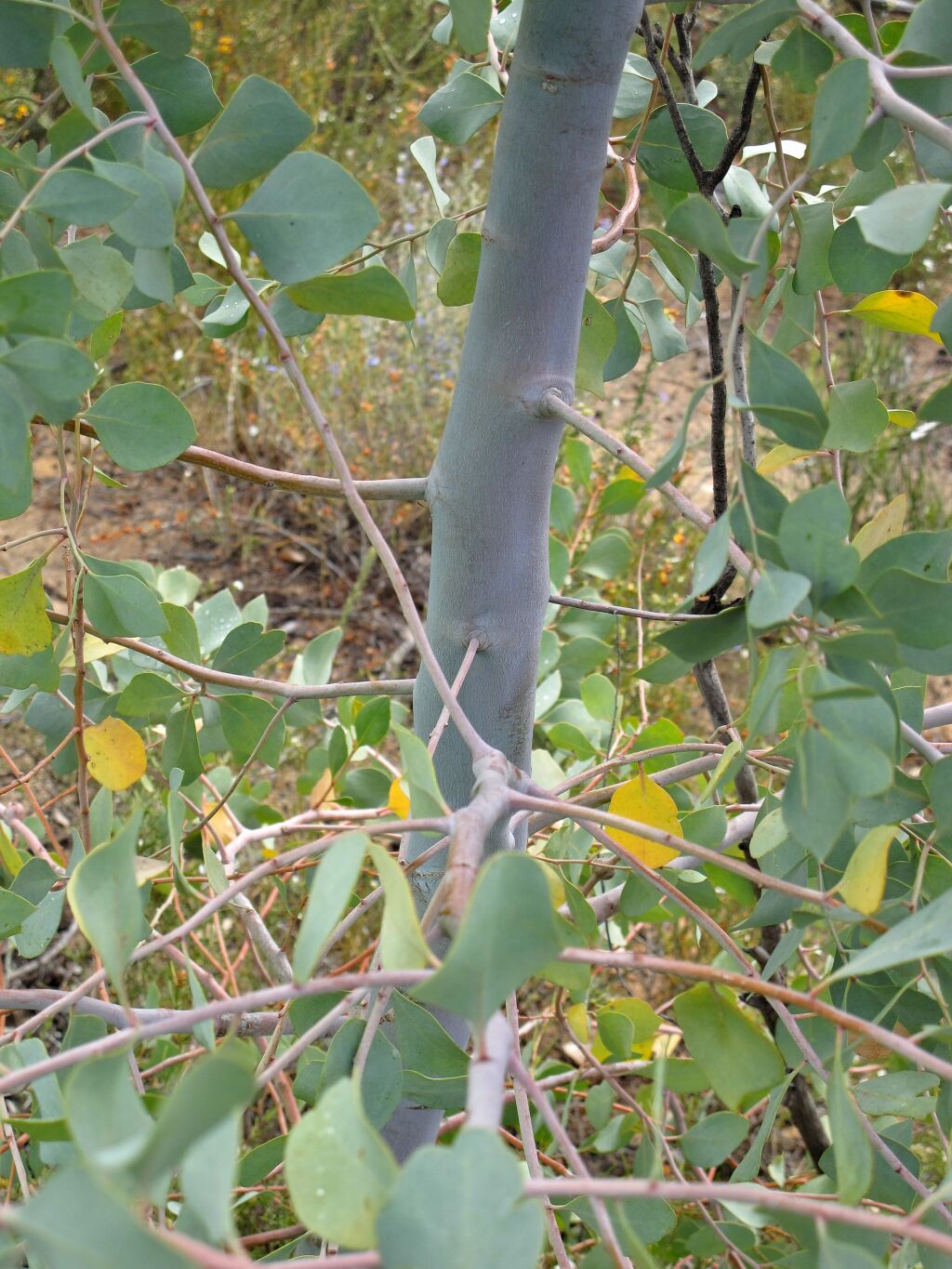Gyrostemonaceae
Trees or shrubs, dioecious or monoecious, glabrous; branchlets often orange, brown or red. Leaves alternate, sessile or petiolate, simple, entire, often succulent; stipules small. Inflorescence axillary or terminal, a raceme or panicle, or flowers solitary. Flowers small, more or less actinomorphic; calyx broadly cup-like, lobed or entire, persistent, the lobes imbricate in bud; corolla absent. Male flowers with 7–100 stamens in 1 whorl around a central disc; anthers almost sessile, quadrangular, 2-locular, opening widely by longitudinal slits. Female flowers with 2–many carpels which are either united together around a central column or fused; ovules 1 per carpel, transverse, placentation axile; stigmas 1 per carpel, free or shortly united with each other, rarely divided. Fruit a schizocarp, carpels 2-keeled, often falling before seeds shed; seeds U-shaped, usually rugose, red-brown, aril prominent, translucent. (Family description based on Victorian respresentatives only.)
Endemic to Australia with 4 genera and 17 species, mostly in drier regions.
Mostly short-lived, usually surviving less than 10 years (sometimes to 20), but germinating readily following fire. Most species suspected of being toxic to stock.
Entwisle, T.J. (1996). Gyrostemonaceae. In: Walsh, N.G.; Entwisle, T.J., Flora of Victoria Vol. 3, Dicotyledons Winteraceae to Myrtaceae, pp. 462–463. Inkata Press, Melbourne.
 Spinning
Spinning

